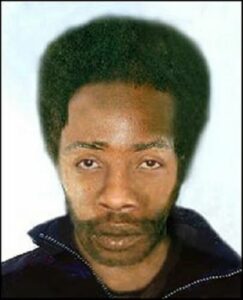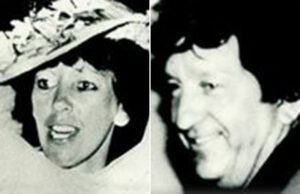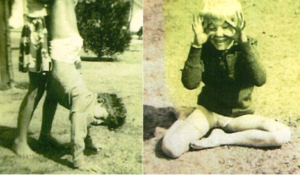Unsolved UK Killing of Charles Walton
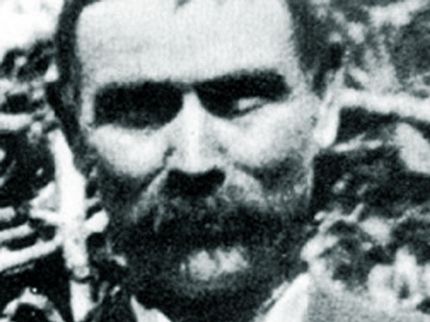
A frequently circulated picture of the victim.
This is one of the first stories I ever read about crime. I recall having bought a huge pink coloured book full of murder and mayhem stories. The description of this case was very different than later accounts. It was billed as all bound up in witchcraft with obsessed cops haunting a secretive village of reluctant witnesses. The real tale is fascinating even though it is unlikely linked to evil spirits. The murder of old Charles Walton in 1945 in Warwickshire remains a dusty unsolved UK killing.
To Set the Scene of the Murder of Charles Walton
As you can imagine a lot was going on. The war was very much in the Allies favour though there were a few surprises still up Nazi sleeves. Rural Britain was affected for sure by the war, but day to day work and life style was almost unaltered from previous decades. Cars were getting old and were rare to start with. The production of cars had been stopped in 1942 because of the war effort. Horses and carts were frequently the transport of choice.
Meon Hill was the scene and a quick look at old photos shows black and white versions of modern colour ones. Lots has changed, but it remains a countryside place doing countryside things. Red brick houses and thatched cottages, still in evidence in Lower Quinton, would have been the scene on 14th February 1945.
Brief Circumstances
Charles Walton was an elderly farm worker who was past retirement. Like many people then and now the pension needed supplementing so Charles worked for a local farmer. At 6pm his niece, Edith, noticed that Charles was missing. She got some help and along with the farmer went to where Charles had been working in a field. He was found brutally murdered. Two weapons had been used to kill him and a two pronged pitchfork had been used to pin him to the floor.
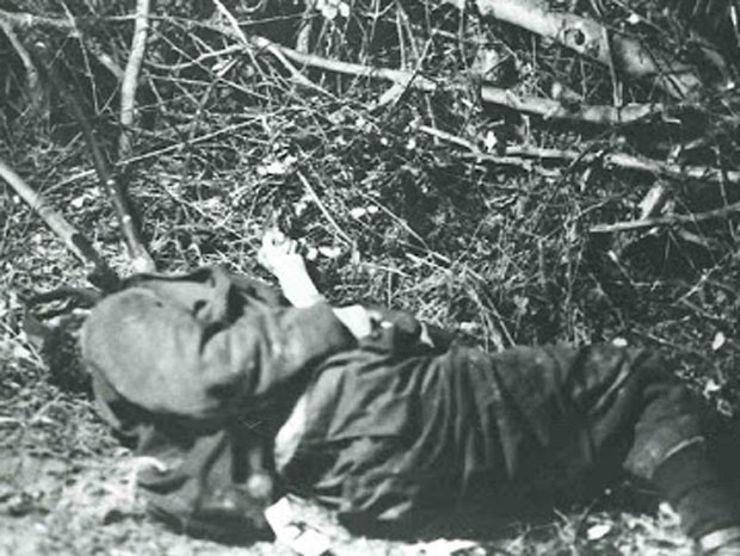
Scotland Yard was called in to assist the local force. After great effort and despite heavy suspicion falling on at least one man, no-one was arrested for the crime. Later lots of theories circulated as well as talk of the victim’s involvement in witchcraft.
A Bit More In Depth
Mr Walton was 74 when he set of for work at a farm called The Firs near Lower Quinton where he lived. The manager of this place was Alfred Potter. He had been there for about five years managing his father’s business.
The arrangement that Mr Walton had with Potter was that the old man would trim hedges that surrounded the fields. Mostly Mr Walton was paid cash every two weeks. On that 14th February he was coming to the end of trimming many such hedges.
Potter assisted another farmer in the morning and in Lower Quinton many people who knew Mr Walton were not far away on similar tasks. Such was the nature of this widower that his close friend was in a barn only 300 yards away. They had not seen each other since before Christmas.
Mr Walton walked with the aid of a stick due to rheumatism and as compact as the community was the area around is fields and hills and trees. So yes there were many people in close proximity, but the fact was Mr Walton worked alone and largely unobserved.
Potter later said that he had returned from a drink with the farmer he had helped and saw Mr Walton at about 12.20 pm. By that time he would have said there was only another hour or so for Mr Walton to do. He also said he was surprised to see Mr Walton had been working in shirt sleeves when he usually wore his jacket. Potter then returned to the farm and in one version he intended to go back to assist a cow that was stuck in a ditch. In another his wife confirmed he had read the paper and assisted another of his workers until after 1 pm.
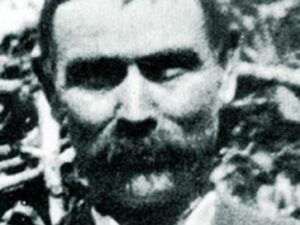
The problem with Potter’s accounts is that they were varied depending on who he spoke to. For instance the cow that he said he had to help had actually drowned the day before.
Mr Walton lived with his adult niece Edith. She had been orphaned 30 years before and had been ‘adopted’ by the Waltons. Charles’ wife had been dead for about 18 years by this point. Edith worked until about 6pm. As the old man did not socialise she immediately became concerned when he was not home by the time she got there. She enlisted the help of a neighbour and they went to The Firs. Potter told them where Mr Walton had been working and all three of them walked to the field.
Mr Walton had had his throat slashed by a hedge cutter he had been using. A two pronged pitchfork had been used to pin his neck to the ground. The handle of that had been jammed to ensure the old man could not free himself. His stick was found later and it had blood and hair on it from where he had been beaten about the head. He did have defensive wounds, but none that suggest he had been able to put up much of a fight. Notably he was wearing his jacket. Later it was revealed that the shirt he had on was sleeveless. Of course this creates more questions about Potter’s account.
There were very heavy police thinkers brought in. In the UK Fabian of the Yard was akin to Sherlock Holmes. The team from Warwickshire were pretty impressive too. So surely the culprit would be exposed as a murderer?
The Investigation
I do believe that in London the killer would have not stood a chance. Rural Warwickshire back then was surprisingly difficult to crack. Near by an Italian Prisoner of War camp had been established. It was suggested that either one of the POWs or a maniac was responsible. No such suspect was identified and the POWs were accounted for.
The fact remains that Alfred Potter was the most likely suspect and he not only contradicted himself but overall his behaviour was suspicious. When it was suggested, deliberately, by a Constable that finger prints may be found on the tools used in Mr Walton’s death guess what he said? Immediately he came up with a story that the neighbour who had accompanied Edith suggested he check if Mr Walton was dead. As a result he touched the pitchfork. As with many things, however, this was contradicted when enquiries were made.
One problem that I can see they had was motive. Mr Walton had indeed almost finished the task he had been set so would be due some small amount of money. Other ex employees of Potter did say he had been slow to pay sometimes but it wasn’t shown that that was what had happened. A pocket watch belonging to victim was missing, but it had only been valued at 25 shillings a few years before. That of course is the price it might have got in a legal sale. It would have been worth far less as a stolen item.
Potter chopped and changed his story but only by degrees. He said he saw the victim at 12.10 at 12.15 and at 12.20. At one point he said he saw a stationary figure that he had thought was Charles Walton. On other occasions he said he saw him working hard. It mattered little because both his wife and another worker placed him at the farm and the pathologist latter put the time of death at between 1pm and 2pm.
Detective Defeat
Fabian and co went back to London empty handed. Detective Superintendent Alec Spooner is said to have returned to Lower Quinton many times just to walk the area to remind people he was still interested. Fabian later suggested that there may have been some witchcraft motive, but he didn’t elaborate and myths circulated relating to ancient folklore. For example it was said that a cross had been cut into Mr Walton’s chest. That wasn’t true. What I had not seen until just now was that the victim’s trousers were undone. Maybe he had just finished relieving himself when attacked but otherwise that is strange.
In short all these years later no more is known in public than was known back then. My own view is formed from living in small rural communities all these years after I spent 30 years in a city. First lots of people can know what has happened, but not be sure and certainly they will not step forward in front of everyone readily. I mean you get that in cities too, but in the country there is a certain sort of thicker bond.
I doubt that is the main issue. It was February, lots of people working but they worked at distance and in isolation. There would have been no casual ramblers in the cold out where Mr Walton was. I think it likely the simple fact of where and when the murder occurred meant that it would have taken a confession to solve it.
Potter is roundly thought to have been responsible but of what? Maybe he was hiding some other activity. His accounts certainly make him suspicious but that is not enough to convict. He was interviewed by the best and that is all we can say.
By all means check this story out more. The Wikipedia article seems very well put together and there is much written about it. I just suggest you treat the witchcraft aspect with a bit of scepticism. If you do come across something on that aspect or any other I would love to hear from you.
Cheers
Tim
https://www.mirror.co.uk/news/uk-news/mystery-unsolved-valentines-day-murder-9816258

